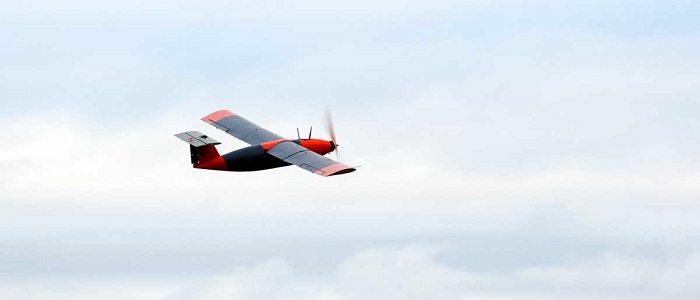“The idea was simple: stick solid state hydrogen fuel into a drone and fly it – but it’s tricky to do,” says Phil Anderson, head of Marine Technology at the Scottish Association for Marine Science in Argyll, UK, where the flight took place.
Just as hydrogen fuel-cell cars have been eclipsed by electric vehicles, the idea never really took off with aircraft either. Previous efforts such as the Cryoplane project from Airbus used large tanks of liquid hydrogen kept at super-low temperatures. But these tanks proved too big and cumbersome to be practical. Storing hydrogen as a pressurised gas is also not very efficient.
Drone on and on
The new system, designed by UK firm Cella, uses around 100 solid pellets packed into a cartridge. The 1-centimetre-squared pellets are made from a chemical compound that produces a steady stream of hydrogen as they are gently heated.. This gas is then converted into electricity in a fuel cell that runs the drone’s rotor. The inclusion of a polymer stops the compound melting and helps it release hydrogen at a lower temperature.
The test flight lasted for 10 minutes and flew at an altitude of 80 metres – although it could have gone for two hours with the fuel it had on board, says Anderson. “Unlike with a battery, if you put in twice as much fuel you can go twice as far.”
Anderson thinks a future version of the drone would be perfect for the environmental and climate monitoring that his team carries out in the Arctic and north Atlantic. Because it is lighter than battery-powered drones it can fly for longer– plus it’s cleaner.
“The main thing is it just produces water vapour,” says Anderson. “A lot of the science we want to do is looking at trace gases so we can’t have contamination.”
Drones first, planes next
Because the drone’s propeller is its only moving part, it is also not susceptible to an effect called carburettor icing that can prevent petrol drones from operating in extreme cold, he says. He hopes to have a hydrogen drone carrying out research science in the next couple of years.
But, tantalisingly, the technology might not just be for drones. Longer term, it could be used in city cars and eventually provide hydrogen power for commercial aircraft, Anderson says.
“It’s a first step,” agrees Cella managing director Stephen Bennington. Cella is already working with French aviation firm Safran to produce pellet-powered fuel cells that can produce auxiliary power for planes – such as for in-flight entertainment and galley lighting. Another version of their technology for high-power applications dispenses with cartridges altogether and uses millimetre-sized pellets that can be pumped like a liquid fuel.
“If they can do what they claim, then they have a much bigger commercial space than just drones,” says Missy Cummings at the Humans and Autonomy lab at Duke University, North Carolina. “But the real answer will come in their next steps.”
More about:
















































